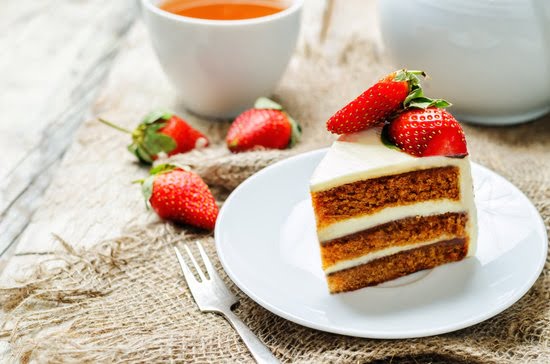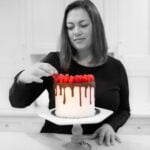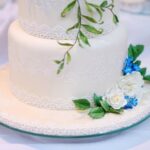Are you looking to learn how to decorate a cake without fondant? Fondant has its benefits, but it also comes with drawbacks. This section will explore the limitations of using fondant for cake decoration and the advantages of alternative decorating methods, providing insights into choosing the right frosting, various piping techniques, creative designs with fresh fruits, using edible flowers and herbs, chocolate ganache and drip, textured finishes, as well as final touches and presentation.
Fondant is known for its smooth finish and ability to create intricate designs, but some may find it too sweet or chewy. Additionally, it can be tricky to work with for beginners and may not pair well with certain flavors. This article will offer alternative options that allow for more flexibility in taste and texture while still achieving beautiful cake decorations.
By exploring different types of frosting textures and flavors, readers will gain a better understanding of how to choose the right frosting for their desired cake decoration style. Whether it’s buttercream, cream cheese frosting, or chocolate ganache, there are numerous options available that provide different looks and tastes compared to fondant. Stay tuned as we delve into the world of creative cake decorating without fondant.
Choosing the Right Frosting
When it comes to decorating a cake without fondant, the type of frosting plays a crucial role in achieving the desired texture and flavor. There are several alternatives to fondant that can be used for decorating cakes, with each offering its own unique characteristics. Whether you prefer a creamy, smooth buttercream or a tangy cream cheese frosting, choosing the right frosting can make all the difference in the final look and taste of your cake.
Buttercream Frosting
One of the most popular choices for cake decorating, buttercream frosting is known for its versatility and smooth texture. It can be easily colored and flavored, making it ideal for creating intricate designs on cakes. With a combination of butter, powdered sugar, vanilla extract, and milk or heavy cream, buttercream frosting can be adjusted to achieve varying levels of sweetness and stiffness.
Cream Cheese Frosting
For those who prefer a tangy twist to their cakes, cream cheese frosting is an excellent alternative to traditional buttercream. With its rich and creamy texture, cream cheese frosting pairs well with a wide range of cake flavors such as red velvet or carrot cake. It offers a slightly tangy flavor that adds depth to the overall taste of the cake while providing a smooth consistency for piping decorations.
Whipped Cream Frosting
Light and airy, whipped cream frosting is another delightful option for decorating cakes without fondant. Made with heavy whipping cream, powdered sugar, and vanilla extract, whipped cream frosting has a delicate texture that complements light and fluffy cakes like sponge or angel food cake. It can also serve as a canvas for incorporating fresh fruits and berries into the decoration.
In addition to these classic frostings, there are also variations such as Swiss meringue buttercream and ganache that offer different textures and flavors for decorating cakes without fondant. Experimenting with these different types of frostings will allow you to find the perfect match for your cake’s flavor profile and design vision.
Piping Techniques
When it comes to decorating a cake without fondant, piping techniques can be a game-changer. Buttercream and cream cheese frostings are not only delicious but also versatile for creating intricate designs on cakes. From classic rosettes to elegant swirls and beautiful borders, the possibilities are endless with these frosting options.
Classic Rosettes
One of the most popular piping techniques is creating classic rosettes on a cake. To achieve this look, fill a piping bag fitted with a star tip with your choice of buttercream or cream cheese frosting. Start in the center of the cake and pipe in a circular motion, working your way outward to create beautiful rosettes all over the cake’s surface. You can vary the size and color of the rosettes for added visual interest.
Elegant Swirls
Swirls are another elegant way to decorate a cake using buttercream or cream cheese frosting. With a large round tip, pipe swirls onto the top of the cake in a spiral motion, starting from the center and working towards the edges. You can also create vertical swirls along the sides of the cake for a cohesive design.
Beautiful Borders
Finally, adding borders to your cake is an excellent way to give it a polished finish. Use different piping tips to create scalloped, zigzag, or shell borders around the top and bottom edges of the cake. Borders not only enhance the appearance of the cake but also provide a professional touch that elevates its overall presentation.
With these piping techniques in your decorating arsenal, you can transform any homemade or store-bought cake into a stunning masterpiece without using fondant. Whether you’re making a birthday cake, wedding cake, or just want to indulge in some creative baking, mastering these piping techniques will take your cakes to new heights of elegance and beauty while still keeping them deliciously fondant-free.
Creative Designs With Fresh Fruits
When it comes to decorating a cake without fondant, incorporating fresh fruits can be a delightful and delicious alternative. Not only do fresh fruits add a pop of color to the cake, but they also bring natural sweetness and flavor to every bite. Berries such as strawberries, blueberries, and raspberries can be used to create beautiful patterns or arrangements on the cake. Slices of kiwi and mango can add a tropical touch and vibrant hues to the cake’s design.
One creative way to incorporate fresh fruits into cake decoration is by creating a fruit layer between the cake sponges. This not only adds visual appeal when the cake is sliced but also infuses each bite with juicy fruit flavors. Another option is using pureed or mashed fruits in buttercream frosting to add both color and taste.
| Fruit | Buttercream Frosting Recipe |
|---|---|
| Strawberries | Vanilla Buttercream with Fresh Strawberry Puree |
| Kiwi | Citrus Buttercream with Diced Kiwi |
| Mango | Coconut Buttercream with Mango Coulis Swirls |
Edible Flowers and Herbs
Using edible flowers and herbs to decorate a cake is not only visually stunning but also adds a natural and sophisticated touch to the dessert. There are countless options for edible flowers and herbs that can be used to adorn cakes, from delicate lavender petals to vibrant rose petals and aromatic mint leaves. Here are some creative ideas on how to incorporate these natural elements into your cake decoration:
- Lavender-infused sugar: Infuse granulated sugar with dried lavender buds and sprinkle it over the cake for a subtle floral flavor and beautiful presentation.
- Rose petal confetti: Gently press dried rose petals onto the frosting of the cake or scatter them around the base for an elegant and romantic look.
- Mint leaf garnish: Place fresh mint leaves strategically on top of the cake or around the tiers to add a pop of green color and refreshing taste.
Incorporating edible flowers and herbs into your cake decorating can elevate the overall aesthetic of the dessert while adding unique flavors and aromas. Before using any flowers or herbs, it’s important to ensure that they are safe for consumption and have not been treated with any chemicals. Always source these ingredients from reputable suppliers or grow them yourself in order to guarantee their quality.
When using edible flowers, consider factors such as seasonality, flavor compatibility, and size to create harmonious designs that complement your overall cake vision. Additionally, keep in mind that some guests may have allergies, so it’s advisable to provide a detailed list of ingredients used in the decoration for their awareness.
Overall, incorporating edible flowers and herbs into your cake decoration can result in a beautiful, natural, and sophisticated dessert that will surely impress your guests. With careful consideration and creativity, you can turn simple blooms and leaves into stunning accents for any occasion.
Chocolate Ganache and Drip
Chocolate ganache is a versatile and delicious way to decorate a cake without using fondant. It’s a smooth and glossy mixture of chocolate and cream that can be used for frosting, filling, or creating stunning drips on cakes. Ganache provides a luxurious finish and adds a decadent flavor to any cake, making it an excellent alternative to fondant.
To make chocolate ganache, you’ll need high-quality chocolate and heavy cream. The ratio of chocolate to cream will depend on the consistency you desire. For a pourable ganache to create drips, you’ll use equal parts chocolate and cream. If you want a thicker ganache for frosting or filling, you can use more chocolate than cream.
Once you have your ingredients ready, heat the heavy cream until it starts to simmer, then pour it over the chopped chocolate. Let it sit for a few minutes before stirring until the chocolate is completely melted and the mixture is smooth. Allow the ganache to cool slightly before using it for decorating purposes.
Using ganache as a drip decoration involves pouring it around the edges of the cake so that it drips down the sides. This technique creates a stunning visual effect and adds a rich flavor to your cake. You can also use ganache for frosting by letting it cool and thicken before spreading it onto the cake with an offset spatula. The options are endless when it comes to using ganache for cake decoration.
| Ganache Decoration | Data |
|---|---|
| Ingredients | High-quality chocolate, heavy cream |
| Consistency Ratio | Equal parts for pourable ganache; more chocolate than cream for thicker consistency |
| Drip Technique | Pouring around the edges of the cake for stunning visual effect |
Textured Finishes
When it comes to decorating a cake without fondant, there are plenty of creative and delicious alternatives that can make your baked creation stand out. One way to achieve a professional and unique look for your cake is by exploring textured finishes. Here are some techniques you can try:
- Using a palette knife: One popular technique for creating textured finishes on cakes is using a palette knife. This tool allows you to create beautiful and organic patterns on the frosting, giving the cake an elegant and handmade touch. You can experiment with different types of strokes and movements to achieve various textures, from smooth waves to rustic swirls.
- Stenciling: Another way to add texture and visual interest to your cake is by using stencils. There are countless stencil designs available in stores or online, ranging from intricate patterns to simple geometric shapes. By spreading a contrasting color of frosting over the stencil, you can create stunning designs on the surface of the cake. Stenciling is a versatile technique that can be used for both buttercream and cream cheese frostings.
- Combining techniques: To take your textured finishes to the next level, consider combining different techniques such as using a palette knife with stenciling or layering multiple textures on top of each other. This multi-dimensional approach can result in visually stunning cakes that are sure to impress your guests.
With these textured finishing techniques, you can elevate your cake decorating skills and create beautiful, professional-looking desserts without relying on fondant. Whether it’s for a special occasion or just for fun, experimenting with different textures will open up a world of possibilities for your homemade creations.
Final Touches and Presentation
In conclusion, decorating a cake without fondant opens up a world of creative possibilities that can result in stunning and delicious creations. By exploring alternative methods such as choosing the right frosting, using piping techniques, incorporating fresh fruits, edible flowers and herbs, chocolate ganache and drip, textured finishes, and final touches and presentation, anyone can learn how to decorate a cake without fondant like a pro.
One of the key takeaways from this article is the importance of experimenting with different types of frosting to achieve the desired texture and flavor for the cake. Whether it’s buttercream, cream cheese frosting, or a smooth chocolate ganache, each type offers its own unique characteristics that can enhance the overall look and taste of the cake.
Additionally, utilizing natural elements like fresh fruits, edible flowers, and herbs adds a sophisticated touch to any cake. These elements not only provide vibrant colors but also infuse the cake with delightful flavors. Furthermore, incorporating textured finishes and final touches such as sprinkles, edible glitter or gold leaf can elevate the presentation of the cake to an entirely new level. With these techniques in mind, anyone can create visually stunning and delicious cakes without using fondant.
Frequently Asked Questions
What Can You Use Instead of Fondant on a Cake?
Instead of fondant, you can use buttercream, ganache, or marzipan to cover a cake. Buttercream offers a creamy and smooth texture, ganache provides a rich chocolatey flavor, and marzipan adds a sweet almond taste.
What Can I Put on a Cake Instead of Icing?
Instead of traditional icing, you can opt for whipped cream, cream cheese frosting, or chocolate glaze to top your cake. Whipped cream gives a light and airy finish, cream cheese frosting adds a tangy sweetness, and chocolate glaze provides a glossy and decadent coating.
How Do You Make a Cake Look Good Without Icing?
To make a cake look good without icing, you can consider using fresh fruit such as berries or sliced kiwi to decorate the top of the cake. Alternatively, dusting the cake with powdered sugar or cocoa powder can add an elegant finishing touch without the need for icing.
Another option is to arrange edible flowers on the surface of the cake for a natural and visually appealing decoration.

Welcome to our cake decorating blog! My name is Destiny Flores, and I am the proud owner of a cake decorating business named Cake Karma. Our mission is to provide delicious, beautiful cakes for all occasions. We specialize in creating custom cakes that are tailored specifically to each customer’s individual needs and tastes.





